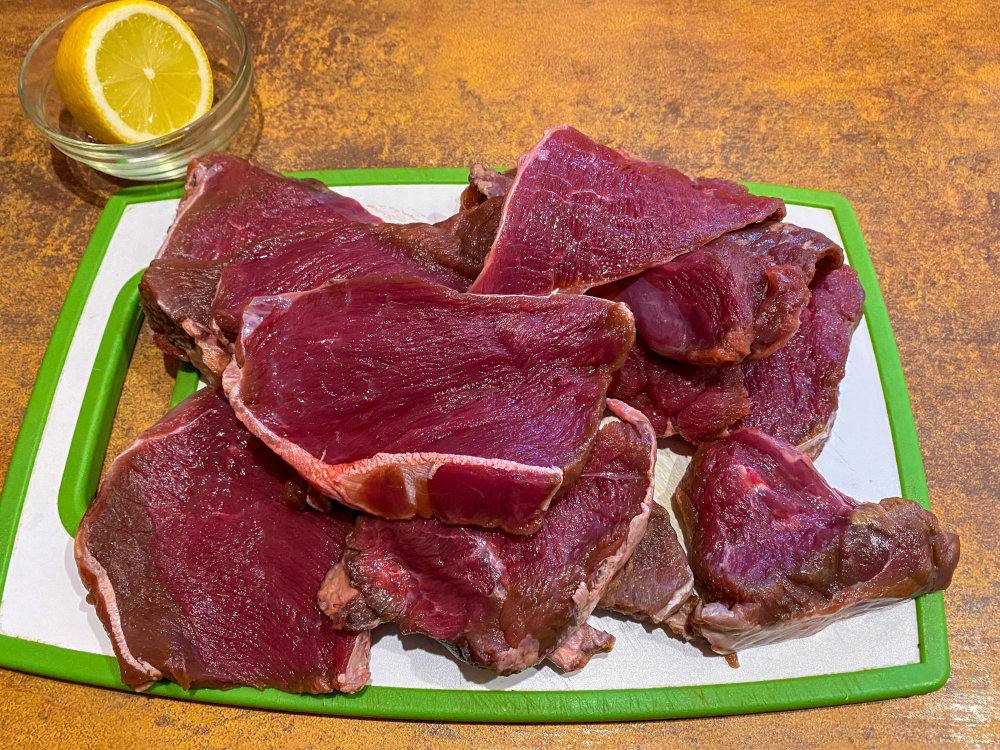Did you know the tallest mammal in North America is also the largest species of deer in the entire world? Moose all fall under one species known as Alces alces, but there are several subspecies within the group. The largest of them is the Alaska moose (Alces alces gigas), which can be 1.8 meters (6 feet) tall at the shoulder and weigh up to 725.7 kilograms (1,600 pounds). Larger than most humans, do we risk it all for a nice moose steak?
There’s evidence to suggest humans have been hunting moose for their meat since the last Ice Age (fingers crossed it tasted better than this 50,000-year-old bison stew), and we don’t like to waste them. According to Oregon’s Greenbelt Land Trust, we’ve historically made moose capes, dresses, and jackets, and even moose bone spears and gaming dice.
Today, moose can be found wandering across much of the Northern Hemisphere. They’re in Canada, Alaska, Scandinavia (where they are called elk), and Russia, wandering freely across the northernmost parts of the United States, Eastern Europe, and northern Asia. As for the big question…
Do people eat moose meat?
Yes, people still eat moose meat today. It’s considered a nutritious and staple red meat food source across their home range.

Steaks, sausages, mince. Moose meat comes in all cuts and varieties.
Image credit: Zydrunas / Shutterstock.com
What is moose meat called?
As we mentioned earlier, moose are the largest species of deer, and like other deer, their meat is called venison. It’s eaten as steaks, made into sausages, and ground into mince.
What does moose meat taste like?
Moose meat is described by many as a cross between venison and beef. Like other deer species, its meat is dark and rich, but it doesn’t always have quite the same gamey kick you get from other deer products.
In the same way you see butchers brag about their grass-fed beef and corn-fed chickens, the flavor of moose meat can depend on its environment and in what format it’s been eating. You’ll also find different flavor profiles across different “cuts” of meat in the same way you do with beef, so that cow-deer crossover does seem to be a good fit (dodo meat, on the other hand, seems to be a harder flavor profile to place).
Is moose meat good for you?
“Moose meat, liver, kidney and blood are all excellent sources of protein and iron,” says a report from the Government of Northwest Territories. The meat and liver are also excellent sources of B vitamins, which help our bodies use energy from foods and are important for healthy skin, hair, nerves, and muscles as well as healthy growth and development.”
However, there have historically been concerns raised over contaminants. Organs like the liver and kidney can contain higher levels of contaminants like cadmium, which gets into their bodies through bioaccumulation.
Moose is an Algonquin term meaning “eater of twigs”, reports the National Wildlife Federation, and they love to eat their plants. Herbivores tend to have lower levels of contaminants compared to carnivores, but as they age, contaminants can build up over time.
Moose bulls are famous for their impressive antlers, but did you know they pop off after a while? This cool video shows it happening, but what’s going on with these moose’s “Devil’s Antlers”?
Source Link: What Does Moose Meat Taste Like? The World’s Largest Deer Is A Staple In Parts Of The World